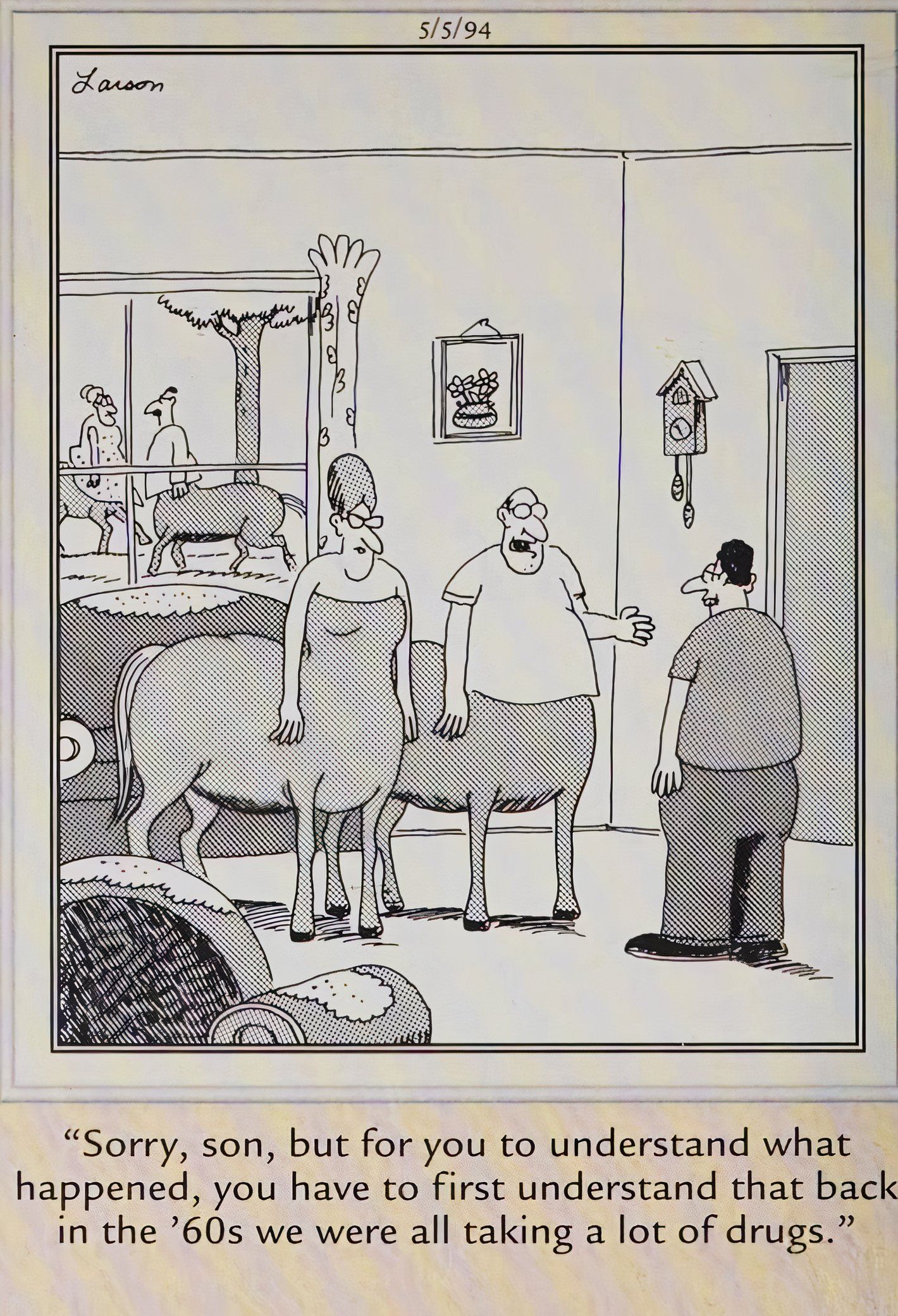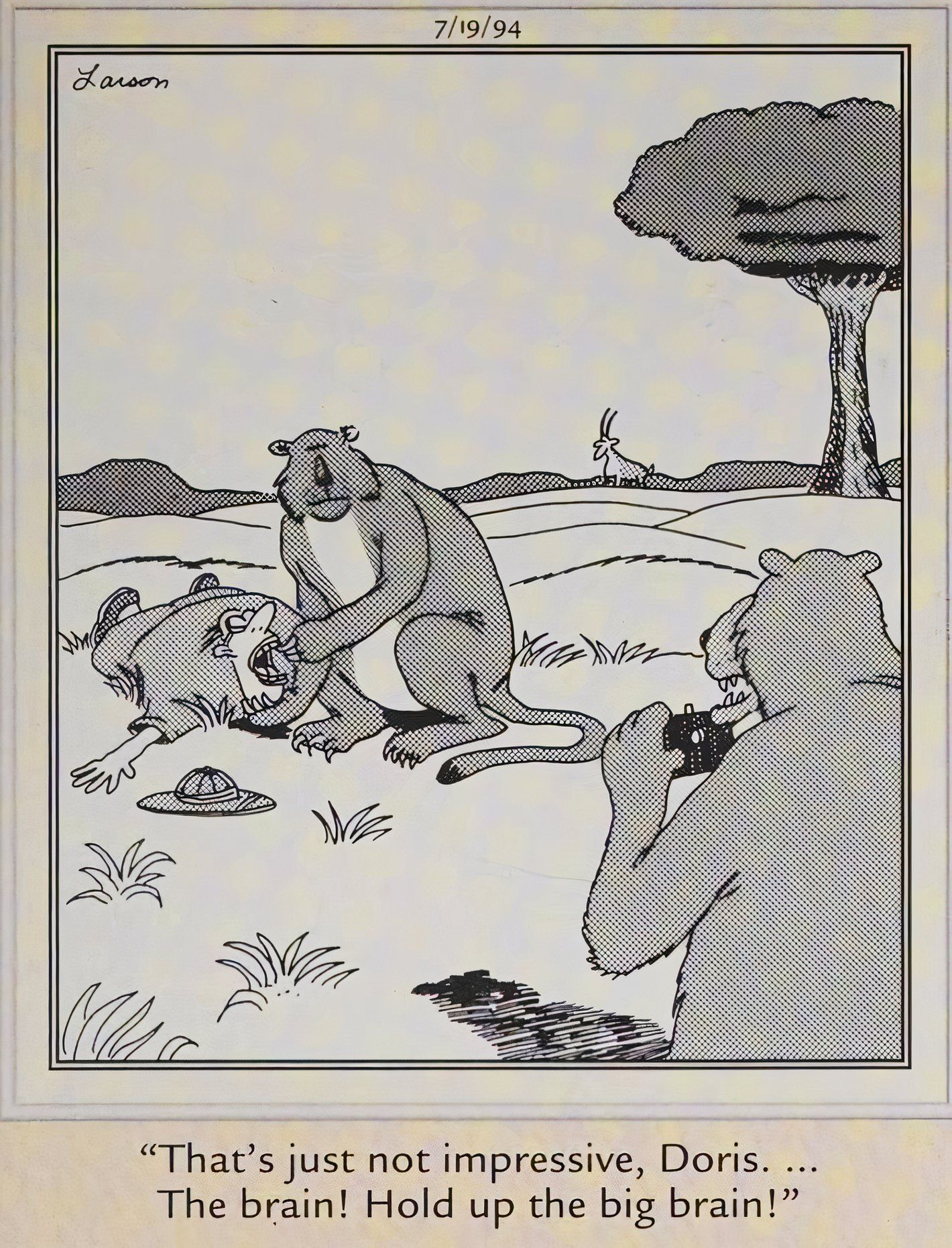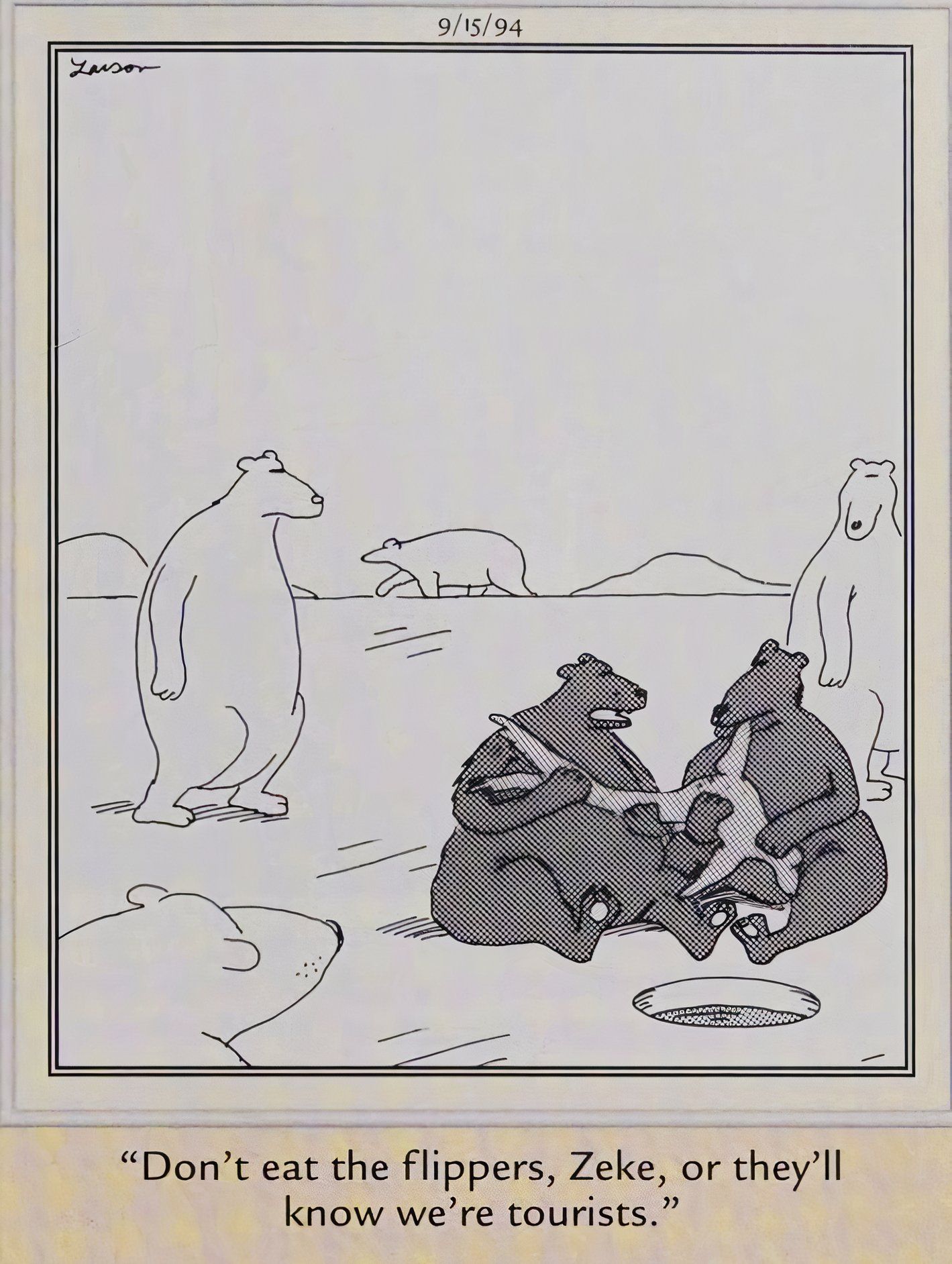
1994 was the last year of The Far Sideconcluding a fourteen-year publication that surprised and confused readers, providing countless laughs and provoking endless iterations of the question,"What?"As was the cause throughout the cartoon, the last year of Far Side cartoons was as full of wonderfully weird moments as ever.
Creator Gary Larson retired in early 1995 after a final Wizard of Oz reference on New Year's Day. Although the artist already said more than a decade ago that one day "pull the plug" about The Far Sidethe ending was still a disappointing surprise for legions of fans, which left readers with many unanswered questions.
It's fair to say that Larson left in his prime; The Far Side was evolving in 1994, but what it might have become is a question about which Gary Larson devotees can only speculate.
12
The Far Side chewed up and spat out countless characters during its run
First published: January 18, 1994
The Far Side was a difficult place to exist - the cartoon's cast of characters were just as likely to fall victim to tragedy as they were to hilarious bouts of irony, simple wordplay could lead to death or disfigurement, and, perhaps worst of all, its characters could sometimes be incredibly critical.
Case in point, this cartoon, in which two anthropomorphized pens in a bar look askance at "a chewed #2 pencil"when he walks in the door, a goofy smile and wide eyes on his face. Larson leaves the reader to ponder the class distinctions between fountain pens and used pencils, but the drawing reflects just enough of a familiar human scenario for readers to place themselves in the panel's mood, though many wonder, "What?"
11
Sometimes even obvious jokes can confuse readers at first
First published: February 4, 1994
"Strawbrothers" has gained a reputation as one of the strangest films of Gary Larson's late era Far Side cartoons, largely because their joke is slyly left for the reader to infer. Larson once again brings inanimate objects to life as three scarecrows are depicted in a field as two of them apparently pressure the third to change the straw, at which point they will "everyone be straw brothers."
A play on the “blood brothers” ritual, even readers familiar with the concept are often perplexed at first by this joke. Far Side comics often reveal themselves to readers upon closer examination, but Larson's goal was to evoke an immediate reaction, and so it is important to catalog when confusion precedes clarity in engagement with the individual. Far Side panels.
10
When a distant side's joke is too obvious, readers may wonder "What?"
First published: March 11, 1994
Some Far Side comics cause a "What?"reaction because they are unexpectedly complex or unrepentantly confusing, but even the simplest Far Side Joke can confuse readers. That's the case with this cartoon, caption "basic tours", in which a bus full of cows, Far Side more trustworthy characters, take a tour through several fallow meadows, with the guide explaining that "next spring it will all be green and lush."
From the first Far Side cartoon to the end, a reliable kind of "What?"the answer was:"What? Why is this funny?" There's not much more to "understand" about this comic than its shallow premise, making it similar to the infamous "Cow Tools" panel, with the cartoon's humor not necessarily jumping off the page at readers.
9
Far Side's classic wordplay is presented in a strange and hilarious way
First published: April 28, 1994
"He's got a good head on his shoulders", the foreman of a factory tells a new employee about his co-worker, Mueller, who has a second head growing out of his right shoulder,"but it's better not to mention it." This panel is an example of The Far Side tendency for absurd literalizations, as here, Gary Larson takes a familiar expression and portrays it at face value, to great comedic effect.
To Far Side readers, an immediate "What?"the reaction didn't stop the laughter, as the details in this panel - particularly Mueller's eyes, and his second head, in contrast to the other characters' ocular opacity, a classic Gary Larson trick - will certainly strike readers as funny, while the The very idea of this will be met with incredulity.
8
A unique family on the other side faces a difficult conversation
First published: May 5, 1994
Far Side cartoons were often remixes and mash-ups of different elements; Gary Larson might, for example, take a contemporary pop culture reference and mix it with a historical anecdote, or combine a sophisticated scientific concept with an understated comedic joke. Sometimes this amounted to a deliberate clash of tones – in this case, the real and the surreal.
In this panel, a young man listens his parents explain that "To understand what happened, you first have to understand that, in the 60s, we all used a lot of drugs”, a very real conversation that a teenager in the early 1990s might have with their parents – except in this Far Side panel, the parents are centaurscombining real fantasy with very realistic family dynamics.
7
One thing distant readers can say for sure about Gary Larson: He's watched a lot of movies
First published: June 1, 1994
The Far Side it was full of movie references over the years; some are still immediately obvious to this day, while others have become more obscure over time. This is the case of this panel, in which two astronauts tear up the lunar surface, discovering it is "just a paper moon,” in what appears to be a reference to Peter Bogdonovich’s 1973 film.
Once again, this is an example of Gary Larson's ability to find humor in literalization, as well as his tendency to derive jokes from "And if?" questions — in this case, "what if the moon was actually paper?" Still, even for readers who understand the reference, the fact that it prompted Larson's illustration will surprise some readers, especially those who expect more from it.
6
Check out "The Big Brain" in this cheetah victim from the other side
First published: July 19, 1994
In this terrible Far Side cartoon, a pair of large predatory cats killed a human on a safari, with one of them now posing with the body while the other takes a photograph. "Isn't that impressive, Doris..."photography complains, as the killer cat in question opens the dead human's mouth, much as great hunters do to their kind - instead, the speaker insists that Doris step forward, and "hold the big brain!”
The details of this Far Side comic book makes it one of Gary Larson's darkest since at least 1994, and that alone will hit readers before it necessarily seems funny, resulting in a "What?"or even one"My God!"The reaction to the panel's macabre comedy impresses the reader.
5
Gary Larson had a knack for combining the serious and the very unserious
First published: August 11, 1994
That Far Side cartoon uses deliberately terrible art to strong comedic effect, but the way it contrasts this with the seriousness of the joke's premise - workers of the "Plutonium Truck Drivers' Union" exposed to the harmful effects of radiation, resulting in all kinds of mutations – will make many readers pause before letting a whisper of amusement escape their lips.
In this way, however, this Far Side The panel perfectly exemplifies the way Gary Larson routinely mixed gravity and levity to achieve a dynamic that rarely failed to make an impact on readers, whether by making them smile, frown, or gasp in surprise. This comic expertly aims for a mix of the three, hooking readers with both its image and caption and refusing to let go.
4
The other side has always been the story of the strange confirmation
First published: September 15, 1994
ONE Far Side The main theme was the idea of standing out in a crowd or standing out from your peers - as is aptly illustrated by Gary Larson using bears in this cartoon, with a pair of black bears on vacation in the Arctic trying not to stand out like "tourists"among local polar bears, eating regional cuisine the wrong way.
"Don't eat the fins, Zeke,” the bear wife warns her husband, and while it may leave some readers perplexed at first, considering it in the context of Larson’s perennial status as an artist and cultural outsider makes this a metaphorically potent book. Far Side cartoon, once the initial confusion has been overcome.
3
Gary Larson portrays the survival of the fittest and most distant style
First published: October 11, 1994
In this Far Side comic, father and son peek over the fenceWild animals invade the neighbor's house, with the father telling his son, "I know you miss the Wainwrights, they were weak and stupid people... and that's why we have wolves and other large predators."
The Far Side he was often gloomy, but his mood was rarely so severe; Although the unexpected directness of the father's words may elicit a wave of nervous laughter from readers, many will have an initial reaction of dismay at the merciless way in which Gary Larson dispatches his human characters here, and the unexpectedly Darwinian philosophy that the father conveys as if was practical wisdom.
2
This topical reference from the other side is wild – if you understand
First published: November 11, 1994
For many readers, this Far Side panel, which presents a sequence of panels representing "the life and times of Captain Hazelwood", in which he pours a variety of liquids, from childhood to adulthoodit can be fun in isolation. However, for those who understand the profound reference that Gary Larson is making, perhaps it is The Far Side most brutal criticism directed at a single individual.
That's because the character in the panel is a reference to the captain of the Exxon Valdez when he crashed during one of the worst man-made ecological disasters in history. Here, Larson portrays him as having a lifelong tendency to spill things, of which the Exxon Valdez oil spill was only the most recent and most tragic occurrence.
1
When all was said and done, the other side came out on their own terms
First published: December 20, 1994
"CHICKEN,", shouts an alligator cook, placing a live chicken on the counter in front of him - while tables full of satisfied customers gnaw on the bones of their own birds; is another one of The Far Side distorted "slice of life" drawings, but because of its proximity to the end of the strip, it seems like there should be more than there actually is.
From beginning to end, Gary Larson first sought to satisfy himself with each comic book he produced. Sometimes this led to a mood that went over readers' heads, or failed to connect with them, or even asked too many of them - but whatever the case, The Far Side has always been irrevocably a product of Larson's idiosyncratic humor and uncompromisingly fresh worldview.











